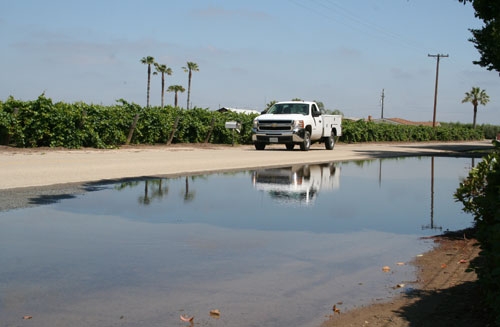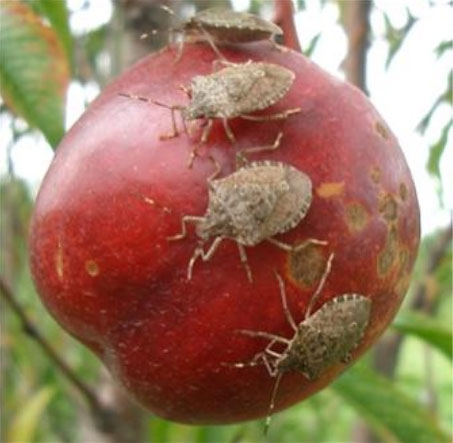Posts Tagged: Matthew Fidelibus
Atypical rainstorm pounds the central San Joaquin Valley
Another chapter in California's unusual 2011 weather saga was added over the weekend when clouds dumped 1.64 inches of rain in Fresno, seven times the average for the month June, according to the Fresno Bee.
The story, written by Mark Grossi, said that the wet weather increases the potential for mold and mildew problems in vineyards. Growers may be applying additional treatments of mildew-fighting chemicals.
"Rain during this stage of the growing season is really unwelcome," the article quoted Matthew Fidelibus, UC Cooperative Extension viticulture specialist based at the Kearney Agricultural Research and Extension Center.
For farmers of other crops, the rain storm is a break from having to irrigate fields for a few days, agricultural officials told Grossi.
According to the Weather Channel website, the usual dry and warm weather pattern for June will soon resume. By Thursday, the valley high temperature is forecast at 90 degrees, about average for this time of year.
Exotic stink bug threatens nearly nationwide damage
Another pest has been added to the list of exotic insects that dishearten California farmers. The brown marmorated stink bug, a destructive native of Asia, has been seen this spring in 33 states, including California, Oregon and Washington, according to the San Francisco Chronicle.
"All that we do know for certain is that a tremendously large population went into overwintering in fall 2010. So, if they survived, there could be a very large population emerging in the spring," the story quoted Tracy Leskey, a research entomologist at the U.S. Agriculture Department's Appalachian Fruit Research Station in Kearneysville, W.Va.
The stink bug will feed on almost anything, including cherries, tomatoes, grapes, lima beans, soybeans, green peppers, apples and peaches. When it feeds, it leaves behind an ugly spot that renders the fruit or vegetable unmarketable.
UC Cooperative Extension farm advisor Stephen Vasquez and viticulture specialist Matt Fidelibus warned of the new pest's potential to harm California grape crops in a post to their new Viticulture blog. They wrote that damage can be substantial when BMSB populations are not identified early and managed appropriately. Growers and wineries are also concerned that the “stink” from any bugs accidentally crushed in wine or juice grapes could taint the product with off flavors.
"One might define this thing as the bug from hell," U.S. Congressman Roscoe Bartlett told the Chron. "If I was a mad scientist doing gene splicing and putting together a bug that would really be nasty and I was turning it loose on my enemy, I probably couldn't do a better job."
The Chronicle said the best hope for farmers that have brown marmorated stink bugs is the insecticide dinotefuran, the active ingredient in the commercial products Venom and Scorpion. The chemical compound is labeled by the Environmental Protection Agency for use on vegetables, grapes and cotton, but not in orchards, as it is in Japan and other Asian countries.
More information about the BMSB and current research is available in a streamed PowerPoint presentation by USDA's Lesky posted on the web.
Rain soaks California farms
People involved in agriculture rarely complain about rain, but the latest series of winter storms has folks talking.
The San Joaquin Valley Viticulture Facebook page, maintained by UC Davis viticulture specialist Matt Fidelibus and Fresno County UC Cooperative Extension farm advisor Stephen Vasquez, reported on the drenching in the center of California.
"We've received more than two inches of rain at Parlier in the last 48 hours, and rain is likely for 7 of the next 10 days," read a post made at 4 p.m. on Monday.
Sacramento Bee reporter Loretta Kalb got commentary about the wet weather from the director of UC Cooperative Extension for Sutter, Yuba and Colusa counties, Chris Greer. He said the effects of this year's late-season soaking raised concerns for some row crops and tree crops. The wet ground will make it difficult to plant some crops such as rice during the traditional late April or early May schedule.
"If we don't get the ground dried out completely, it warms up, the weeds start growing, and they get a head start on the crop," Greer said.

Flooded San Joaquin Valley vineyard.


